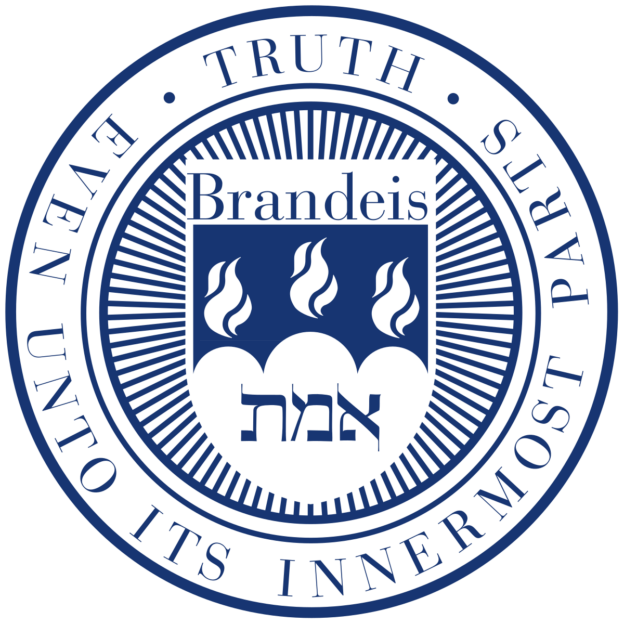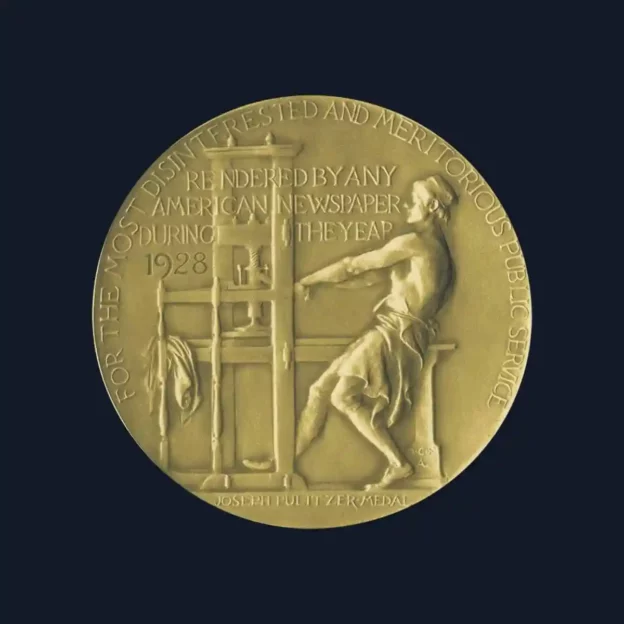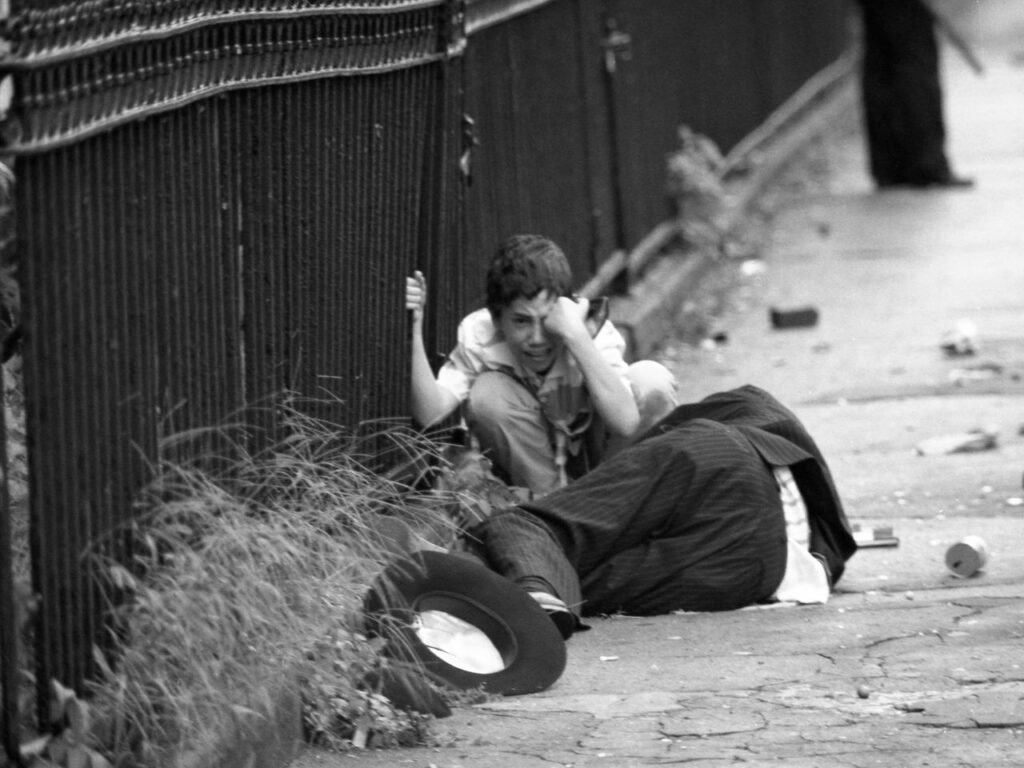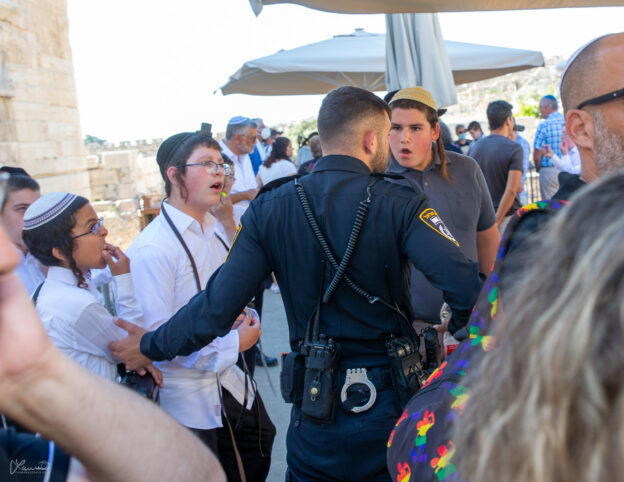A “notorious sect” that takes over towns “like locusts, killing everything they encounter, draining every last resource” has invaded a small Hudson Valley municipality!
Betcha can’t guess the identity of the invaders. well, you can find out at here.

A “notorious sect” that takes over towns “like locusts, killing everything they encounter, draining every last resource” has invaded a small Hudson Valley municipality!
Betcha can’t guess the identity of the invaders. well, you can find out at here.

It’s always irksome when news media report one side of a story without making the effort to see if there may be (as there always is) another side. This tends to happen quite often when the story is about religious Jews.
To read about a recent such example of journalistic malpractice (and an older one), click here.

I take a seat second to no one when it comes to alacrity in detecting and pointing out anti-Orthodox bias. Exposing such bias has been a recurrent theme in my writing for many years. A feature article I wrote detailing a long list of anti-Orthodox media slants and fabrications – “How the Press Picks on the Orthodox” was its title — appeared as Moment Magazine’s cover story back in February, 2000. “Stop Otherizing Haredi Jews” was the title of an opinion piece I wrote that was published in The New York Times in February 2022.
Those were only two of many callings-to-task of media, advertisements and individuals – before, after and between those two years – for casting negative light on our community.
But there are times when what might seem, at first wide-eyed glance, as anti-Orthodox is in fact a lesser crime, and a hue and cry is an overreaction.
Like the recent two-page spread ad that Brandeis University ran in a recent issue of The New York Times Magazine. Its headline read: “BRANDEIS WAS FOUNDED BY JEWS. BUT IT’S ANYTHING BUT ORTHODOX.”
Brandeis was indeed founded by Jews, in the Boston area in 1948, when elite colleges in the northeast like Harvard and Yale had quotas limiting the number of Jewish students they would accept. The school was named after Louis Brandeis, the first Jewish Supreme Court justice, features the word emes in Hebrew on its official seal and, while it was always open to students of all, or no, religious backgrounds, it has always boasted a substantial number of Jewish students.
Negative reaction to the “anything but orthodox” ad was quick to come.
Leaders of a student group, Brandeis Orthodox Organization, informed its members that they were “hurt and disappointed to see something like this coming from our university” and declared the ad’s insinuation “unacceptable and antithetical to Brandeis’ values.”
Social media, always fertile ground for nurturing ire, bubbled with antagonism for Brandeis over the ad. “Seriously distasteful” and “problematic” were two of the milder comments. A poster on Twitter contended that there was “no other way” to look at the ad and “not be absolutely disgusted.” Addressing the university, a Washington, D.C. area writer wrote: “Proudly announcing you’ve moved away from your Jewish roots – in the New York Times! – is definitely one way to change your campus demographics.”
The ad, however, is part of a branding campaign through which the university attempts to use humor to tout itself as special, with an emphasis on its Jewish origins. Another of the campaign ads’ taglines asks “Why is this university different from all other universities?” (get it?) and another teases, “University quotas were a polite way of telling Jews where they could go,” a reference to the history of the college’s founding.
The “anything but orthodox” ad went on to describe the origins of Brandeis, and its raison d’etre: “to fight antisemitism, racism, and sexism, and to welcome students of all backgrounds and beliefs.” Its closing line was: “Needless to say, Brandeis is still unorthodox. And rest assured, we have no intention of converting.” Ha.
Responding to criticism of the ad, the university issued a statement defending its decision to include it by explaining that it was intended as “a play on words meant to highlight Brandeis’ unique story and history of innovation” and that the university is “deeply committed to our Orthodox community members.”
A university spokeswoman told a news agency that “We are committed to our Orthodox community members, and the ad was intended not to offend, but to underscore both the diversity of our community and our unusual origin story.”
In fact, the Brandeis campus features an eruv and large kosher catering facilities. Shabbos seudos reportedly draw some 500 participants.
The adjective “orthodox” with a lower-case “o” indeed signals the opposite of innovation (in a negative sense, “stilted”; in a positive one, “faithful to tradition”). And so some oh-so-clever ad writer thought that, hey, since the word with a capital “O” has a Jewish connotation, it would make for a great pun!
Well, it clearly didn’t. But it wasn’t an anti-Orthodox ad. Just an inept attempt at humor.
And so, Brandeis – or its ad agency – is guilty of a crime, and in my book it’s no minor one: failure to be funny.
(c) 2023 Ami Magazine

A recent interaction on a bus in Israel’s central district dovetailed with a proposed change to a law in the Knesset. To read how, click here.

It’s unusual—actually, unprecedented — for Agudath Israel of America or any of its affiliates to communicate with the judges who will choose the recipients of the annual Pulitzer Prizes. But it happens. Or, at least, happened. To read about the communication and what precipitated it, click here.

A kind person might characterize the New York Times’ seemingly insatiable interest in Orthodox Jews as a simple, even laudable, recognition of the community’s importance.
The less benevolent would characterize it as an obsession – and not a healthy one, either for the obsessed or the object of their obsession.
Much well-deserved criticism has been offered – most recently in a masterful essay in the October issue of Commentary by Yeshiva University Azrieli Graduate School of Jewish Education Professor Moshe Krakowski – of the Gray Lady’s hissy fit several weeks ago over chassidishe yeshivos’ curricula.
More recently, though, the Times scored another fix for its addiction to things Orthodox. This one was less incendiary, but still objectionable in several ways.
Titled “How the Hasidic Jewish Community Became a Political Force in New York,” the 2300-plus-word piece seeks to explain, well, just that. And it does a decent job of describing the evolution of Orthodox political activism.
The article’s subheader, though, only reiterates the paper’s longstanding, and apparently incurable, Orthodoxophobia.
“Elected officials,” it reads, “rarely embrace positions that could antagonize Hasidic leaders, who typically encourage their community to vote as a unified bloc.”
The subtle picture thereby painted by the Times for its readers is of craven politicians kissing the rings of sinister bearded Jews who direct their minions (and, thereafter, the politicians) to do their bidding. A less fevered image, one that would have truly been fit to print, would be, simply, politically engaged citizens voting in accord with their self-interest. A phenomenon usually known as democracy.
Leaders of other groups – be they progressives, Hispanics, Asians or communities of color – also encourage their constituents to vote for candidates of their choosing. Somehow, though, they are spared the slander of being characterized in the paper of record as “unified blocs” that inspire fear in candidates. Which is why you may have often read about, say, the “black vote” but never about the “black bloc” (despite the phrase’s mellifluousness).
What’s more, it was particularly reckless that the Times published its recent article at a time when Jews (once again) have been accused by unstable cultural figures (each with tens of millions of fans) of controlling the world.
But what really stuck in my craw was the piece’s description of the “pivotal moment” in the emergence of Orthodox activism in New York in 1991: the “Crown Heights riots [that] shook the city.”
When, in the article’s words, “Brooklyn streets had turned into combat zones, pitting groups of Hasidic Jews against mostly Black men” [emphasis mine].
Makes it sound like a showdown between rival urban gangs, not a vicious, hate-fueled attack by one ethnic group against another, whose members sought only to repel the onslaught and defend itself.
Although the article musters the sympathy to acknowledge that “Hasidic leaders in Brooklyn pleaded with city officials for more police intervention and protection, but the help did not come until days later,” the description of the pogrom itself is odiously misleading.
And, as it happened, it echoed the paper’s description in 2012 of the 1991 events as having been “riots that exploded between blacks and Hasidic Jews” [ditto about the emphasis] – as if marauding gangs of Jews and blacks had spent four days attacking one another, when, in fact, the besieged Jewish residents of Crown Heights cowered and prayed as their non-Jewish neighbors attacked them and their property. (Has war “exploded between” Russia and Ukraine?)
And if, back in 2012, the description of events smelled not only rancid but familiar, that’s because a full decade earlier, in a report about the reversal of the federal civil rights conviction of Yankel Rosenbaum’s murderer, the Times called the riots “violence between blacks and Orthodox Jews” [yes, ditto again].
After that description appeared in 2002, I called the reporter whose byline appeared on the report, and asked him whether he felt that his wording really reflected what had happened on those horrific days in 1991.
To his credit, he admitted that his choice of phrase had “not been the wisest.” I responded that I appreciated his honesty and trusted that a more accurate description of the pogrom would be used in future Times reports.
Well, the Gray Lady is 20 years grayer now, but, frustratingly, no wiser.
© 2022 Ami Magazine

A piece I wrote for Haaretz that appeared right after Yom Kippur can be read here. A PDF copy of the piece can be requested at rabbiavishafran42@gmail.com

We’re so used to the phrase, we don’t think about what it means.
I speak of “Ultra Orthodox,” the common description of Jews who, like Jews since Sinai, consider Torah divine, halachah sacrosanct and the Jewish mission imperative.
What does “ultra” bring to mind in, say, politics? Does “ultra-conservative” conjure an image of a judicious, reasonable Mike Pence or of a racist, antisemitic Pat Buchanan? Would you invest money into an “ultra-risky” venture? What does it mean when a racing competition is called an “ultra-marathon”?
In all those cases, “ultra” implies something extreme, something abnormal. No, world, we’re not freaks. We’re observant Jews, Orthodox Jews. If distinguishing adjectives are indicated, invent them to describe other Jews.
It’s widely and properly accepted in our country that racial, ethnic and religious groups have the right to determine how they wish others to refer to them. “Negro” has been replaced with “African-American”; “Oriental,” with “Asian-Americans.” But “ultra” seems to stick to journalistic and public discourse like mud. And, unlike “Negro” and “Oriental,” the term is inherently pejorative.
Examples abound of subtle disdain for traditional Orthodox Jews. Like how, when we dare to buy homes in new neighborhoods, we are portrayed as invaders. Neighborhoods change. That’s life. And are we bringing crime, drugs and gangs with us – or increasing the worth of current homeowners’ properties?
Then there’s how we vote in “blocs.” Creepy word, that, redolent of things like “Communist bloc” or “Arab bloc.”
Other identifiable groups’ members also tend to vote in tandem. There’s the “black vote” and the “Hispanic vote.” Why are only we “ultras” a “bloc”?
Astoundingly, the New York Times, in its recent hit piece on chassidishe yeshivos, sees nefariousness even in yeshivos encouraging parents to vote. The promotion of a civic duty is somehow suspect? That there are candidates favored by yeshiva communities is unethical? Doesn’t the Times regularly offer lists of its own endorsements to its “talmidim,” the readers who respect it as much as, lihavdil, a Satmar chasid respects his Rebbe?
We make no apologies for taking our civic responsibility and legitimate self-interests seriously. Or for voting in higher-than-average proportions. We embrace certain values and goals, and seek to promote them at the ballot box. Pardon, but isn’t that how the American democratic process is supposed to work?
And why is focus placed upon us almost exclusively when a member of our community has done something wrong (or even been accused of such)? Where is coverage in the general Jewish media and non-Jewish media of our community’s abundant and incredibly positive endeavors and accomplishments?
And then there are the stories that gleefully manufacture guilt out of idealism.
Like the aforementioned New York Times’ recent hit piece, which spent part of the paper’s front page and four additional full ones disparaging the chassidishe community, cherry-picking data and haphazardly generalizing. The journalistic jeremiad’s headline, implying financial chicanery, read: “Failing Schools, Public Funds.”
The largest, most striking, of the accompanying photographs shows a chassidishe boy with a look of fear on his face. The intent may have been to imply that he fears his hopeless future or an abusive teacher. More likely, it was the result of the photographer’s sticking a large camera in the boy’s face.
The incredibly negative piece accused yeshivos of – shudder – “censoring” texts. As if a private school, in line with parents’ expectations, has no right to edit material that Times reporters may find innocent but might be seen differently by actual students’ parents.
There are larger issues here. Like parental autonomy over children’s education. And the First Amendment’s guarantee of free exercise of religion; we consider intensive Jewish education, after all, to be nothing less than a religious requirement.
But a diatribe in the guise of journalism constitutes a singular ugliness. And fits the pernicious pattern.
The writers of the recent Times offering, by their surnames, are likely Jews. And the paper’s publisher has Jewish roots. None of them can be accused of antipathy toward Jews.
As a whole, that is.
But there is clear disparagement here, aimed, as in so many instances, by some Jews against some other Jews.
Monitoring media and public discourse has been part of my job at the Agudah for nearly 30 years. I long ago came to realize that haredi Jews have become “the Jews’ Jews.”
© 2022 Ami Magazine

I wrote a reaction to the NYT”s recent hit job on chassidic yeshivos, for Religion News Service. The piece can be read here.

My thoughts on the obnoxious actions of a group of young Orthodox Jews at the Robinson’s Arch area of the Western Wall, and on some of the reaction to them ,can be read here.